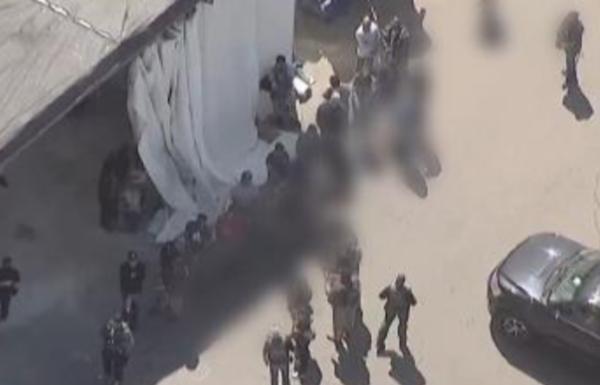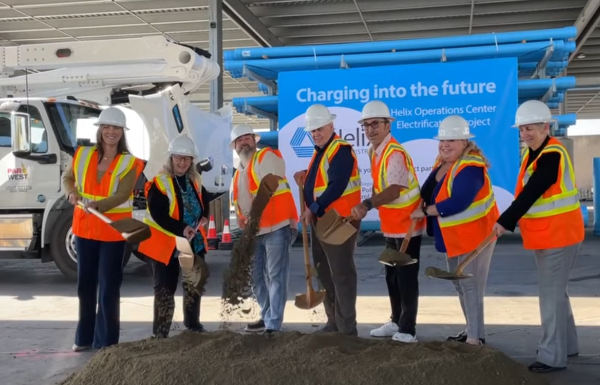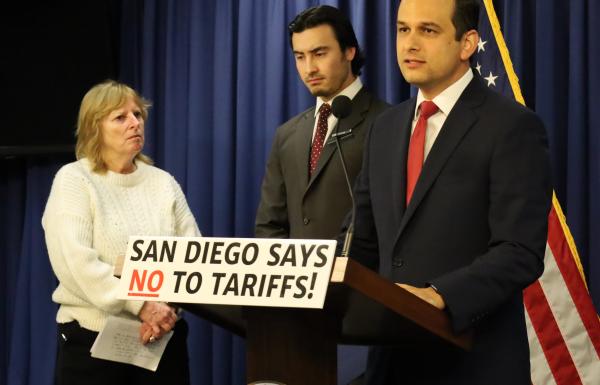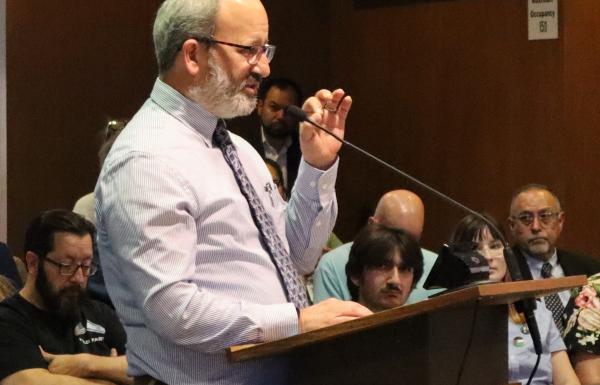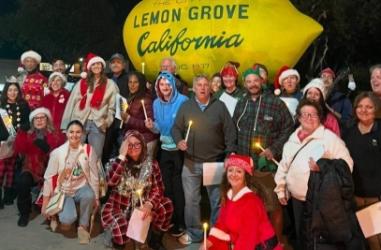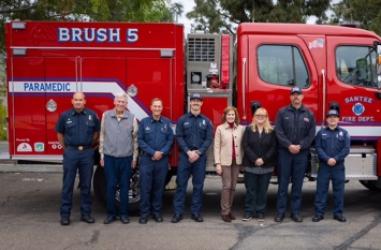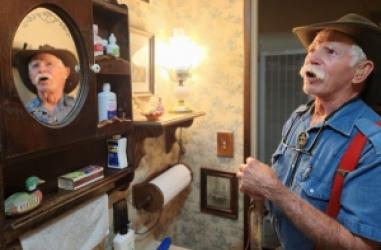Politics
Visit East County
Latest articles
DESTINATION EAST COUNTY: MEMORABLE SEPTEMBER EVENTS

By Miriam Raftery
August 18, 2025 (San Diego’s East County) – As summer transitions into fall, September brings seasonal events such as an Autumn Jubilee, Grape Stomp Festa and Apple Time Tea in Julian, Oktoberfest in El Cajon, a 911 Memorial walk in Lakeside, a roaring '20s fashion show in Lemon Grove, and Poway’s annual Rotary parade.
Plus find end of summer music jams at Santee Lakes, theatrical productions, concerts at several locations, Santee's movie in the park, comedy at Sycuan, a health fair at Parkway Plaza, and more.
- Read more about DESTINATION EAST COUNTY: MEMORABLE SEPTEMBER EVENTS
- Log in or register to post comments
SANTEE GETS A NEW BRUSH FIRE ENGINE
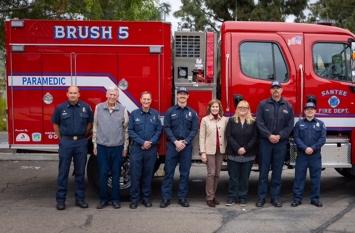
By Mike Allen
Photo: Members of Santee Fire Dept, SD Regional Fire Foundation and the SD River Conservancy with new brush rig funded through the city along with grants from the two nonprofits.
August 11, 2025 (Santee)-- The city of Santee has another key tool in its goal of protecting the city from wildfires, a new brush fire engine.
City officials and the public will get together Aug. 20 for a “push-in” ceremony at Station No. 5 to celebrate the new engine, which was paid mostly from nonprofit grants.
- Read more about SANTEE GETS A NEW BRUSH FIRE ENGINE
- Log in or register to post comments
OUR GUIDE TO VISITING TRIBAL LANDS IN SAN DIEGO’S INLAND REGION
 Photo, right, Sycuan pow-wow dancer
Photo, right, Sycuan pow-wow dancer
East County News Service
San Diego’s inland region is home to 19 Native American tribes and 18 reservations—more than any other county in America. Local tribes trace their history here back more than 12,000 years.
Many of our local tribes welcome visitors to enjoy facilities on tribal lands, which are each sovereign nations. Attractions include casinos, hotels, golf courses, spas, concerts and other live entertainment, restaurants, an outlet shopping mall, restaurants, buffets and bars, a speedway, a paintball range, a museum, Native American pow-wows, a brewery, a vineyard, a dispensary, hiking trails, campgrounds, a water park, bike park, and a zip line.
All local tribal lands are in San Diego County’s inland areas, including northeast, southeast, and central east locations. View map here, or scroll to the bottom of this article.
PROBATION’S NEW HEALTHCARE UNIT WILL ENHANCE MEDICAL SERVICES FOR YOUTH

By Yvette Urrea Moe, County of San Diego Communications Office
August 15, 2025 (San Diego) -- County Probation has created a new integrated Healthcare Services unit with the goal of enhancing the care and support given to youth in detention facilities and both youth and adult clients under Probation supervision. To that end, a new medical director and a healthcare operations manager have joined the Probation team.
“The establishment of this unit is important because it will help address disparities in healthcare and improve health outcomes for our clients after their release,” said Tamika Nelson, Chief Probation Officer. “The money saved will be directed toward enhancing other programs and services Probation provides for our clients to help them successfully transition back into the community.”
MONSTERS ON THE LOOSE: THE TRUE STORY OF THREE UNSOLVED MURDERS IN PROHIBITION-ERA SAN DIEGO

By Richard Carrico
Reviewed by Pennell Paugh
April 2, 2025 (San Diego) - San Diego denizen and resident Richard L. Carrico pieces fragments of evidence together for cold cases, while shedding light on a dark chapter in San Diego's history.
Monsters on the Loose tells the tragic, true stories of three females who were murdered early in 1931: Virginia Brooks, Louise Teuber, and Hazel Bradshaw.
Wildfires
EL CAJON CITY COUNCIL’S FIRE DEPARTMENT COVERAGE WORKSHOP
By G. A. McNeeley
February 15, 2025 (El Cajon) - The El Cajon City Council, city staff, Heartland Fire Department and labor representatives came together on Wednesday to discuss possible short-term options, to staff a newly purchased fire engine, after a grant failed to fund.
Last year, the City Council explored options to augment fire and medical response coverage throughout the city. The Council directed staff to acquire an additional fire engine and seek a grant to fund the staff to operate that engine. Although the engine was acquired, the City was not successful in obtaining the grant. Their intent was to operate the engine (E-208) out of Station 8 as a full service vehicle, staffed with nine new employees. The grant would have paid for the majority of those employees.
FROM THE FIRE CHIEF’S CORNER: JAM FOR LA CONCERT BENEFITS FIRE RELIEF EFFORTS, FEB. 23 IN TEMECULA
By Fire Chief Sam DiGiovanna
February 12, 2025 (Temecula) -- Come join us on February 23 at the beautiful South Coast Winery Resort and Spa in Temecula Ca. This event is supported by the California State Firefighters' Association: CSFA.
FLOOD WATCH ISSUED FOR THURSDAY AND FRIDAY
East County News Service
February 12, 2025 (San Diego's East County) -- An atmospheric river is moving into our region, bringing rain today with heavier rain late Thursday and Friday. A flood watch has been issued starting Thursday afternoon through Friday.
The Pacific storm could bring up to 7 inches on Mt. Palomar, up to 5 inchesin Julian, 2-3 inches in valleys, and up to an inch in some desert areas, with snow at higher elevations, up to two inches above 6,000 feet. Strong wind gusts in mountains up to 70 miles per hour and up to 50 mph in deserts are forecast.
California Highway Patrol is warning of winter storm conditions this morning on I-8 east of Willow Road in Alpine.
- Read more about FLOOD WATCH ISSUED FOR THURSDAY AND FRIDAY
- Log in or register to post comments
HOW TO STAY SAFE IN RAINY CONDITIONS
By Yvette Urrea Moe, County of San Diego Communications Office
February 11, 2025 (San Diego) - With rainy weather in the forecast, including the chance of flooding in some low-lying areas, emergency officials offer seven safety tips.
- Read more about HOW TO STAY SAFE IN RAINY CONDITIONS
- Log in or register to post comments
SENATOR PADILLA INTRODUCES BIPARTISAN BILLS TO IMPROVE FIRE MITIGATION AND RESILIENCY
East County News Service
Photo: Palisades Fire, courtesy of Lakeside Fire Dept. which helped battle the catastrophic wildfire in Los Angeles County in January
February 11, 2025 (Washington D.C.) -- As Southern California recovers from devastating wildfires, U.S. Senator Alex Padilla, a California Democrat, has introduced a package of three bipartisan bills to bolster fire resilience and proactive mitigation efforts.
The package includes the Wildfire Emergency Act, to support forest restoration, wildfire mitigation, and energy resilience; the Fire-Safe Electrical Corridors Act, to authorize the removal of trees or other vegetation within existing electrical utility corridors; and the Disaster Mitigation and Tax Parity Act, to further incentivize homeowners to proactively protect their homes from disasters.









